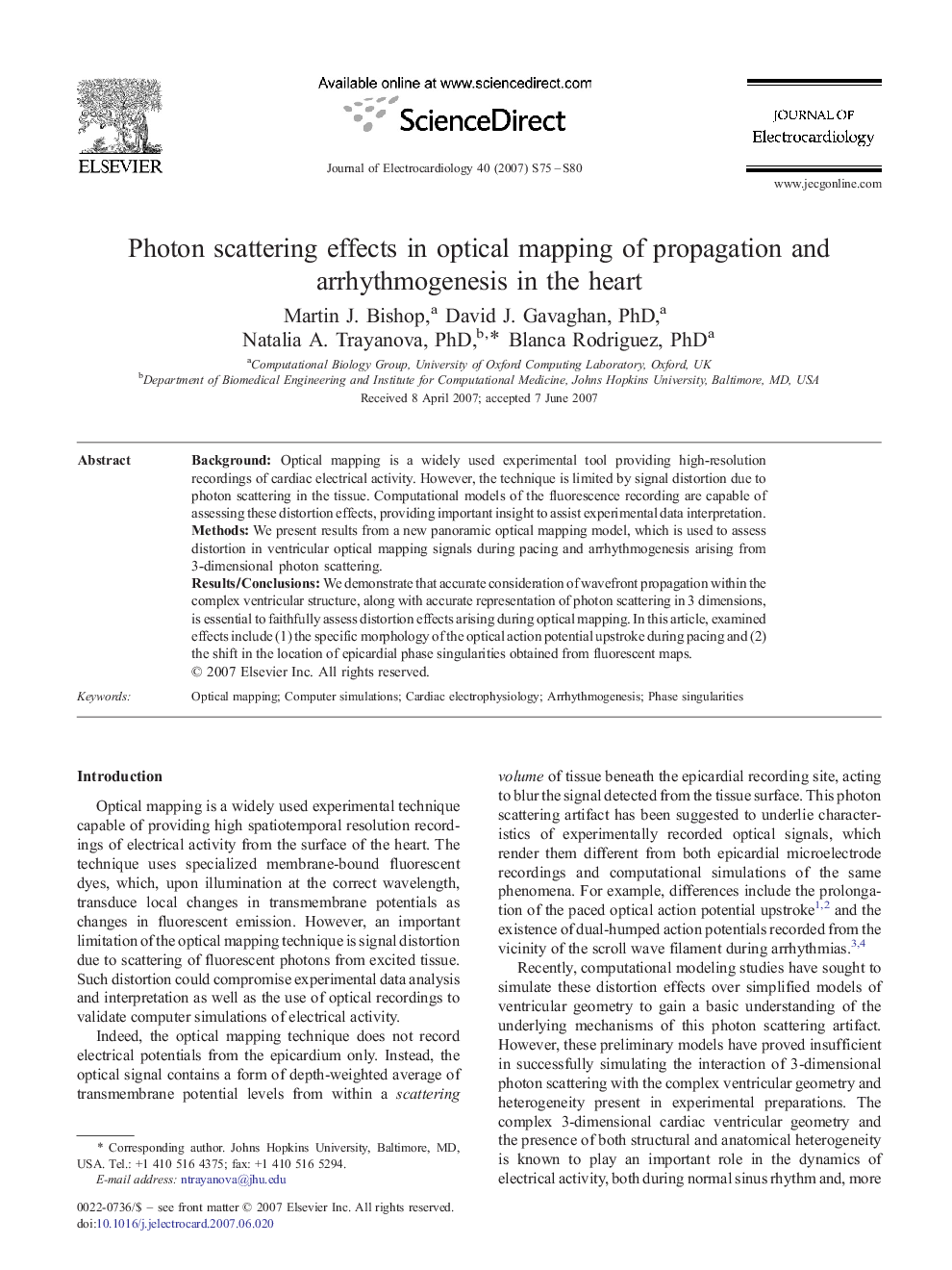| Article ID | Journal | Published Year | Pages | File Type |
|---|---|---|---|---|
| 2968161 | Journal of Electrocardiology | 2007 | 6 Pages |
BackgroundOptical mapping is a widely used experimental tool providing high-resolution recordings of cardiac electrical activity. However, the technique is limited by signal distortion due to photon scattering in the tissue. Computational models of the fluorescence recording are capable of assessing these distortion effects, providing important insight to assist experimental data interpretation.MethodsWe present results from a new panoramic optical mapping model, which is used to assess distortion in ventricular optical mapping signals during pacing and arrhythmogenesis arising from 3-dimensional photon scattering.Results/ConclusionsWe demonstrate that accurate consideration of wavefront propagation within the complex ventricular structure, along with accurate representation of photon scattering in 3 dimensions, is essential to faithfully assess distortion effects arising during optical mapping. In this article, examined effects include (1) the specific morphology of the optical action potential upstroke during pacing and (2) the shift in the location of epicardial phase singularities obtained from fluorescent maps.
